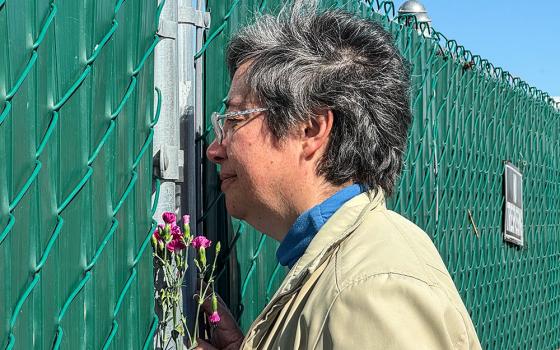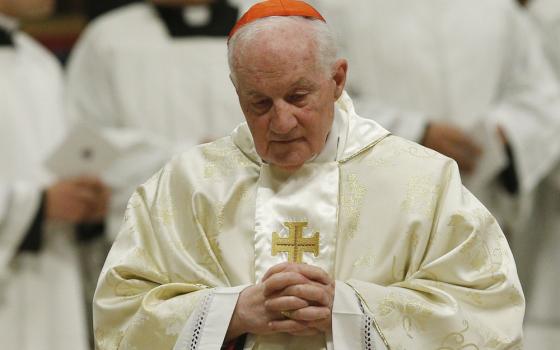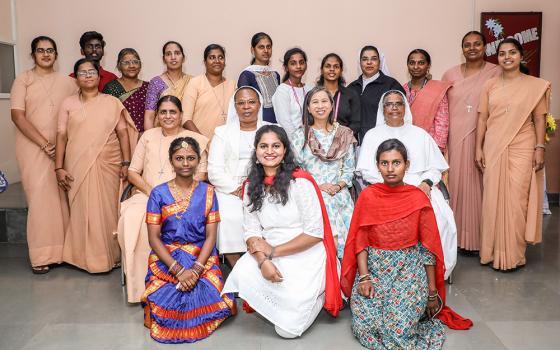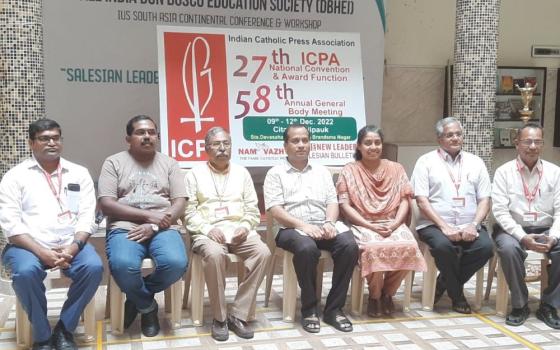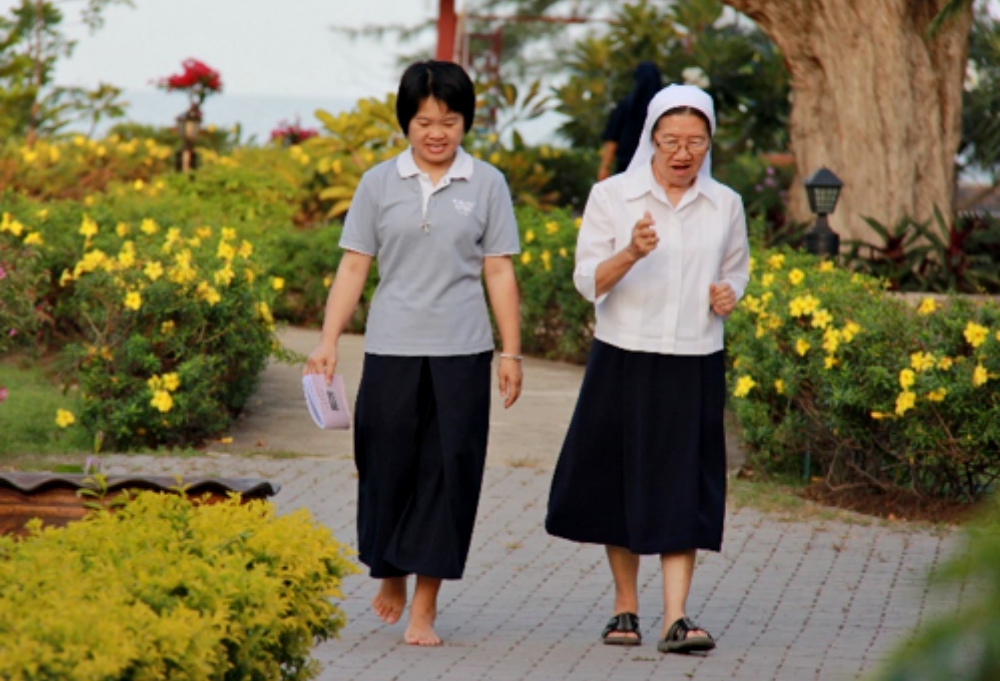
Ursuline Sisters in Thailand: Sr. Jantana Wongsankakorn* says that her experiences of living with elder sisters has created a feeling of being one family. (Provided photo)
This month, panelists from Australia, East and West Africa, Spain and Thailand reflected on some of the issues involved in the changing demographics of religious life. Though patterns of age ratios may vary in different parts of the globe, human needs and responses remain the same. Questions of finding leaders, continuing ministries and living in community are all dealt with in their answers to this question:
How should we or how does your congregation attend to the gap in age between our elder congregation members and younger women religious?
______
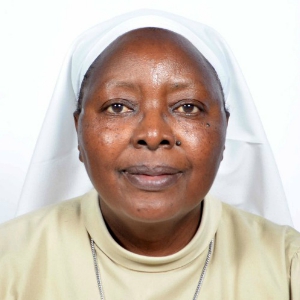 Bibiana M. Ngundo is a member of the Little Sisters of St. Francis in Kenya. After graduate studies, she was a visiting scholar at the Center for Applied Research in the Apostolate (CARA) in Washington, D.C., and is currently a lecturer in African culture and religion at the Catholic University of Eastern Africa. Her current academic interests include collaboration between Catholic sisters and the Archdiocese of Nairobi, Kenya, and issues centering on indigenous women religious in Africa.
Bibiana M. Ngundo is a member of the Little Sisters of St. Francis in Kenya. After graduate studies, she was a visiting scholar at the Center for Applied Research in the Apostolate (CARA) in Washington, D.C., and is currently a lecturer in African culture and religion at the Catholic University of Eastern Africa. Her current academic interests include collaboration between Catholic sisters and the Archdiocese of Nairobi, Kenya, and issues centering on indigenous women religious in Africa.
The congregation of the Little Sisters of St. Francis is an indigenous congregation founded in Uganda in 1923 by Mother Mary Kevin Kearney from Ireland. Today, the congregation has close to 700 professed members working in Uganda, Kenya, Tanzania and the United States. While the congregation enjoys growth and an increase through younger vocations, new challenges are slowly becoming apparent, notably the issue of the age gap. This challenge can't be ignored. It is a reality that will be with us as long as we continue to recruit new members.
However, our leadership has become aware of this new reality and has delved into the enigma in search of solutions. One great thing that has happened in the institute is the appointment of both older and younger sisters into leadership positions as house animators, regional and general superiors and councilors, and as heads of institutions. The age gap here is at least between 30 and 65 years or slightly higher.
The other positive step is in the placement of sisters in different convents. In most cases, age is also considered in appointing sisters to convents. In earlier days, there was always an elderly sister in each convent along with younger ones. She would be a house sister. However, due to career advancements, this practice is no longer tenable. This is because sisters today have moved to career jobs, unlike before, when many lacked specific skills.
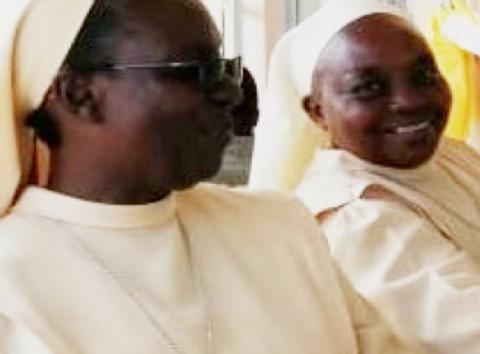
The current general superior of the Little Sisters of St. Francis in Uganda and her vicar (Provided photo)
For the needs of very senior members of the institute, feeble retirees and the terminally ill, homes have been erected in Uganda and Kenya. In these homes, young sisters in their 30s or younger, together with older sisters at least 40 years and above, work as nurses, caregivers, administrators or food service workers.
To address the age gap issue as well as the "myth" of older sisters not knowing how to use modern technology, the institute offers opportunities for technological advancement for all members. Many senior members of the institute today can browse and operate a mobile phone as one of the channels of communication among members. Use of technology in our institute has somehow broken down some of the walls between the generations.
Another strategy employed is bringing together all sisters for common retreats, workshops, seminars and assemblies. This allows opportunity for interaction, nourishment, common learning, evaluation and growth as institute members.
In addition, responsibilities and apostolic roles are assigned to all active and healthy sisters. They are appointed to work in the parish, school, hospital or elsewhere in the vineyard of the Lord as need arises, in whatever they are qualified for regardless of age.
In December and January each year, we celebrate final vows and jubilees of the sisters. Sisters in this age bracket are between 30 and 80 years or above. This is when we can really celebrate our diversity in age and experience in community!
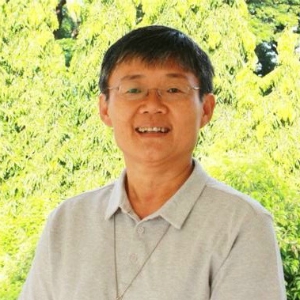 Jantana Wongsankakorn, an Ursuline Sister of Thailand, worked in the financial sector for 10 years. Inspired by the simplicity of religious life, she joined the congregation in Bangkok. After biblical studies in India, Mandarin courses in Taiwan and a tertianship in Rome, she ministered as a catechist and a member of the national chaplain team, and then as a missionary in Cambodia. Currently, she is a member of an Asian Pacific chaplain team and teaches mathematics at the Ursuline school in Bangkok.
Jantana Wongsankakorn, an Ursuline Sister of Thailand, worked in the financial sector for 10 years. Inspired by the simplicity of religious life, she joined the congregation in Bangkok. After biblical studies in India, Mandarin courses in Taiwan and a tertianship in Rome, she ministered as a catechist and a member of the national chaplain team, and then as a missionary in Cambodia. Currently, she is a member of an Asian Pacific chaplain team and teaches mathematics at the Ursuline school in Bangkok.
The Ursulines have been in Thailand since 1924. Since the beginning, we have been a small group of religious women — around 50 members, even in the early years. Now, we have only 33 sisters.
Ten years ago, we were a very international province of the Roman Union, composed of missionaries of more than 10 nationalities. Our last, the only missionary from Canada, passed away this month at the age of 97. The average age of the sisters in our province is around 66. I suppose we can say that is quite young based on World Health Organization information about global aging!
Now, only 50% of the sisters in our province would be considered to be in active ministry. The idea of dividing sisters by age group was first discussed 10 years ago; actually, we saw it as a way to support and encourage each other.
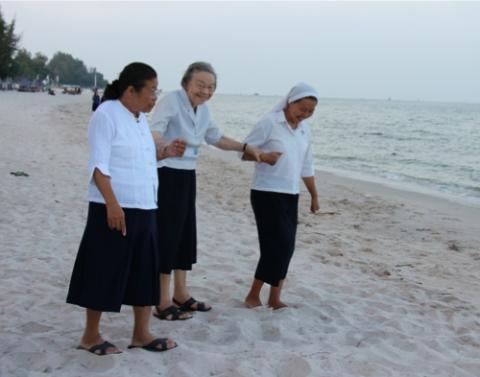
The Ursulines have been in Thailand since 1924. (Provided photo)
We have a retirement home and a large infirmary. The sisters who are not active can have more leisure time to talk, walk and enjoy group activities. They can enjoy special favorite foods and enjoy movies together. In Thailand, we hire some young women to help the aged sisters so that we sisters in active ministry can put all of our efforts into the missions. Life is harder when the works are the same but the harvesters are fewer!
Thai culture is a peaceful one. We live in harmony and — according to Asian custom — respect our seniors very much. Balance is one of the most important values of our culture. We used to have two big communities and three smaller ones. Our communities were "in balance": a mix of both age and nationality. In that situation, the young sisters could learn from the elderly. The young and older sisters worked, prayed and enjoyed life together.
In my experiences of living with elder sisters, we have had a feeling of being one family. To live with only active sisters is a "productive" community, but there is something missing.
Finally, on reflection, I asked myself: What kind of community do I prefer?
I decided that it depends on me and the other sisters who live in a community. Regardless of age, we are all different in many aspects, both physically and spiritually. It is my attitude toward everything around me, especially the ones who live with me, that is the most important factor in my happiness.
We consider ourselves small but beautiful!
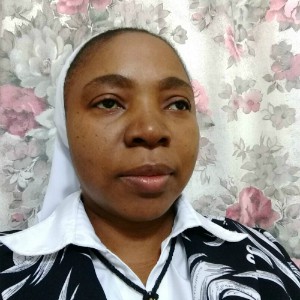 Teresa Anyabuike is a Sister of Notre Dame de Namur living in Ilorin, Kwara State, Nigeria. For a time, she was the coordinator of a Catholic community self-help association, a department of the Justice, Development and Peace Mission in the Ilorin Diocese. Currently, she is serving as a website manager for her congregation. She also manages her congregation's social media outreach.
Teresa Anyabuike is a Sister of Notre Dame de Namur living in Ilorin, Kwara State, Nigeria. For a time, she was the coordinator of a Catholic community self-help association, a department of the Justice, Development and Peace Mission in the Ilorin Diocese. Currently, she is serving as a website manager for her congregation. She also manages her congregation's social media outreach.
Almost all of us are conscious of our age and reflect on what we have achieved at a certain age or stage in life. This is not different in religious life. At the beginning of her journey as a woman religious, it often doesn't matter to a sister where she is sent or what she is asked to do until later, when she begins to assume more responsibilities. Responsibility comes with experience and the disposition of the person involved.
In attending to the gap in age between elder congregational members and younger women religious, all must come to the realization that change is both dynamic and constant. In my congregation, Sisters of Notre Dame de Namur, we are very conscious and aware of the fact that the demographic of our members varies and a lot needs to be taken into consideration.
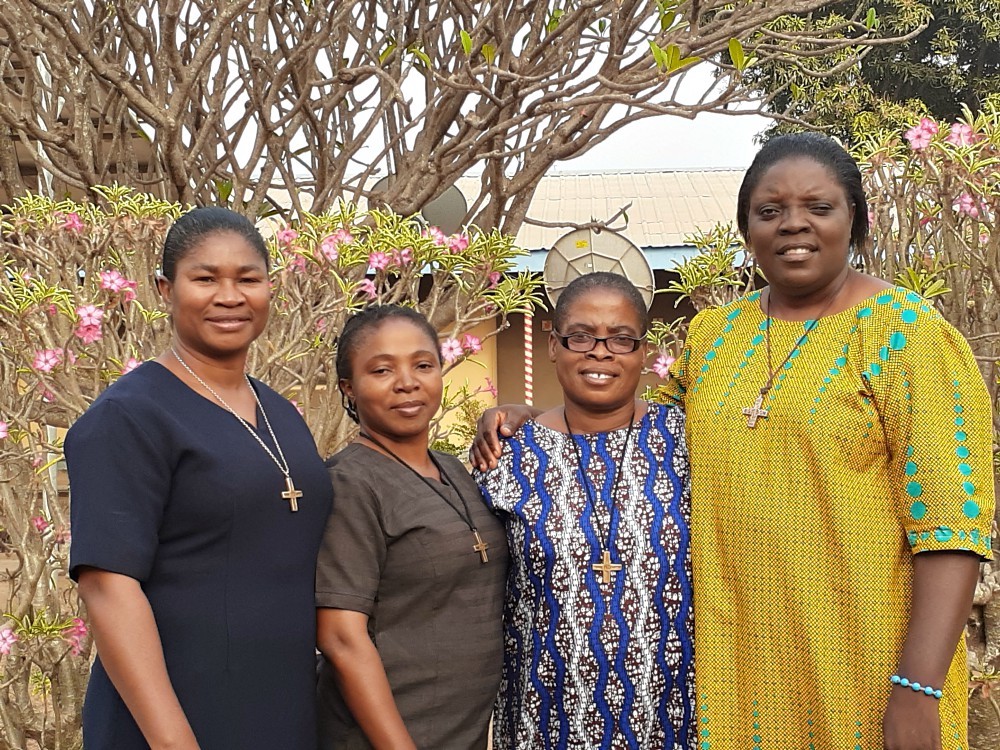
From left: Notre Dame de Namur Sr. Christy Sule, Teresa Anyabuike, Obioma Ezewuzie and Esther Adama show that age is not a barrier to being in leadership. (Provided photo)
Since we are aware of this reality, there are few if any squabbles between elder and younger members. The elder congregation members share their giftedness and knowledge with the younger members to help accomplish the mission even after they are gone. Elder sisters are willing to pass the baton and assign responsibilities to younger sisters while the younger sisters are willing to take up leadership roles and other responsibilities and seek wisdom from the elders.
Most members who have shown leadership qualities in previous responsibilities — who show zeal, willingness, capability and a heart wide as the world! — can be elected into a leadership role. This is regardless of their age as long as they have made perpetual commitment in the congregation, have the health and ability to lead and, very importantly, to listen to their sisters.
Every member of my congregation is treated with respect and, as the saying goes, "respect is reciprocal." Age does not determine the kind of respect given to a sister or the role she plays; what matters is her willingness, disposition and ability to discern God's will and act in the best interests of the congregation.
When I spoke with some younger members of my congregation, they felt their age has nothing to do with any role given to them; they have not felt neglected or shoved away.
Of course, there are some individual sisters of all ages who have felt mistreated or ignored. There are ways to deal with those situations, where sisters can share their feelings with the appropriate authority. Such matters are delicate because sometimes those involved need more care and attention to resolve the issue. It's important in my congregation that anyone who feels shoved aside to address this with her leadership.
In my congregation, I've never seen or heard that a sister was denied a responsibility on the basis of age. We are happy when sisters volunteer for responsibilities! Rather, I have experienced the opposite: Sisters might refuse a responsibility and shift it to a younger member because it's too demanding or on the basis of health.
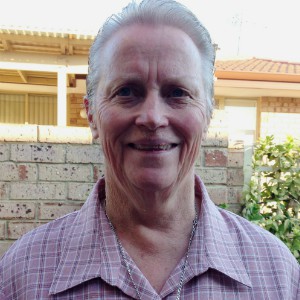 Frances Hayes is a Presentation Sister living in Samson, Western Australia. With an academic background in education and history, she moved from primary education to religious education to administration in Australia and later became the English writer at the apostolic nunciature in Bangkok from 1995 to 2000. She then returned to Australia to minister as a support worker in aged care, a volunteer teaching assistant with refugee women and children, and a volunteer in an organization that builds connections with homeless and vulnerable people.
Frances Hayes is a Presentation Sister living in Samson, Western Australia. With an academic background in education and history, she moved from primary education to religious education to administration in Australia and later became the English writer at the apostolic nunciature in Bangkok from 1995 to 2000. She then returned to Australia to minister as a support worker in aged care, a volunteer teaching assistant with refugee women and children, and a volunteer in an organization that builds connections with homeless and vulnerable people.
"In our congregation, we only have younger sisters" was the response I received from a member of a local congregation when I was in Thailand, discussing religious life and various issues relating to congregational demographics.
The difficulty for them was finding sisters with sufficient wisdom and experience to lead the congregation. At the opposite extreme, for many groups of women religious today, including ours in Western Australia, the difficulty is finding leaders with the emotional and physical ability to lead when the average age of sisters is well over 80 and few even under 70.
Advertisement
To address the issue, many tasks previously accomplished by leaders have been given to lay staff, including:
- Ownership of the colleges given to the Catholic Education Office;
- Appointment of a lay committee to advise on financial, property, and medical and well-being issues;
- An accountant to administer financial business and investments;
- Nurses to care for the medical needs of the elderly or infirm sisters;
- Government care packages for those who need assistance with personal care, gardening, cleaning, cooking or transport;
- Utility accounts paid by direct debit to facilitate payment;
- Specific groups to coordinate celebrations of jubilees, birthdays, feast days, funerals;
- Encouraging sisters to indicate where they want to go when they can no longer care for themselves;
- Letting sisters arrange for friends or family to dispose of their possessions.
At our recent chapter, we formulated some directives that were intentionally written to be aware of the physical limitations faced by each sister.
As reservoirs of contemplative energy for mission and living our Presentation Charism in the Spirit of Nano Nagle to become for our world God's loving gaze and compassionate heart,
We commit ourselves:
- To be women who actively proclaim God's love, justice and mercy in the world
- To be women who celebrate the giftedness of each person, respecting, affirming, accepting and forgiving each individual
- To be women with cosmic awareness supporting the intrinsic value and sacredness of our world, while working collaboratively to ensure its preservation and survival.
Taking this personal responsibility means it is the individual sister who is open to God's call each day. In prayer, reflection and interaction with each community member, the sister asks, "How am I living out this commitment? How do I accept personal leadership for myself, within my community and with the people with whom I interact?"
The designated leader is able to work with each sister and community in a spirit of co-responsibility and care, enabling them to continue to live their life fully.
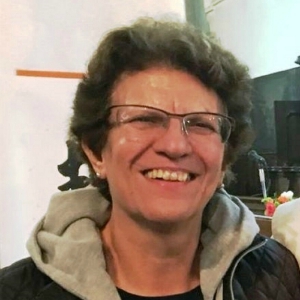 Maria Magdalena Bennásar (Magda) of the Sisters for Christian Community is from Spain. Studies in theology gave her a foundation for the charism of prayer and ministry of the word with an emphasis on spirituality and Scripture: teaching, conducting retreats and workshops, creating community and training lay leaders in Australia, the U.S. and Spain. Currently, she is working on eco-spirituality and searching for a space to create a center or collaborate with others.
Maria Magdalena Bennásar (Magda) of the Sisters for Christian Community is from Spain. Studies in theology gave her a foundation for the charism of prayer and ministry of the word with an emphasis on spirituality and Scripture: teaching, conducting retreats and workshops, creating community and training lay leaders in Australia, the U.S. and Spain. Currently, she is working on eco-spirituality and searching for a space to create a center or collaborate with others.
What unites us it is not our age; rather, it is the call. In the Gospel story, the old Elizabeth and the young Miriam are both filled, pregnant, of the Spirit of God. This is a high language for a low people.
The New begins when the Old has become deaf: the priest Zechariah.
A figure emerges as the hinge between the Old and the New. This figure is sterile and too old to bear a child.
Elizabeth, the nonfertile, becomes the first prophetess of the New, and the mother of the one who will prepare the way of Jesus and ours, as well. Elizabeth is a figure that looms on the horizon. She is an icon of hope: the old woman, invisible, taken for granted — apparently, back then and now, quite ignored by the agonizing patriarchy.
Without her, we wouldn't have the New. Isn't it like this in our religious communities? Without our foundresses and those with them and after them preparing the way, we wouldn't have the now.
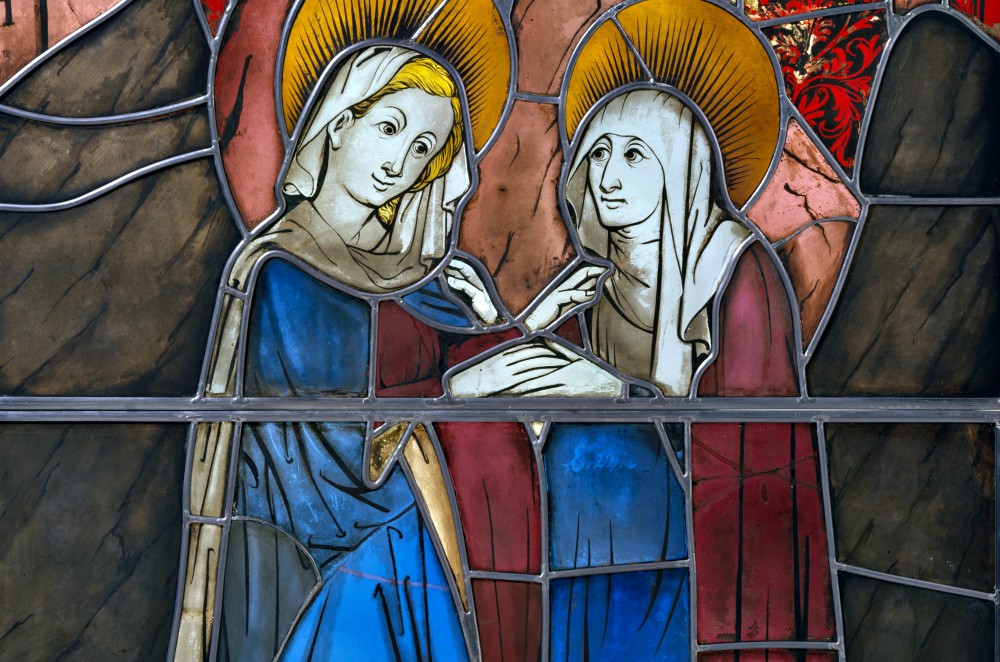
The Visitation, stained glass, Germany, 1444 (Metropolitan Museum of Art)
Is the older one of our story the one who empowers the young, also filled of the mystery of God?
Their embrace is a connection of equals that both experience as a dance in their wombs. It is not the age; rather, what both, old and young, gestate that impels us: to embrace with care the elderly, to challenge the younger to be creative, committed, prophetic.
Religious life fills us up, when listening attentively, with the capacity to be prophetesses: "to birth a new understanding of the reign of God."
In our congregation, each one of us is self-sufficient. We have no properties, no superiors. There is a profound prophetic sense of mutual empowerment. The concept old-young is understood as excitement for the implementation suggested by the Second Vatican Council of the collegial model in communities and in the church. For us, mutual empowerment is a fact. The older members "dance of joy" at the younger, and there is a mutuality, a deep respect for the others' wisdom and gifts.
If I am part of this panel, it is because my sisters (even though my English is not polished — it is the third language for me!) challenged me: They see the stars in my eyes when writing about what is in my womb. I call it "empowerment."
Recently, I visited a kind of Elizabeth or Miriam, or both: a married woman in her 40s, full of the Ruah. She brings to our community the passion and readiness of those who listen. Married? Yes, like "them." In our embrace, our children leaped in us: We have so much to tell her children's generation.
*An earlier version of this caption misspelled Wongsankakorn's name.

